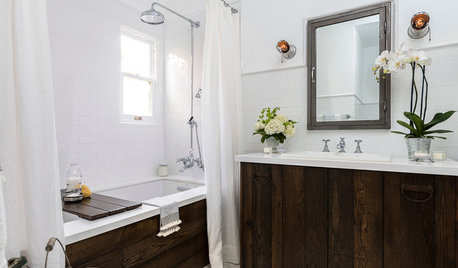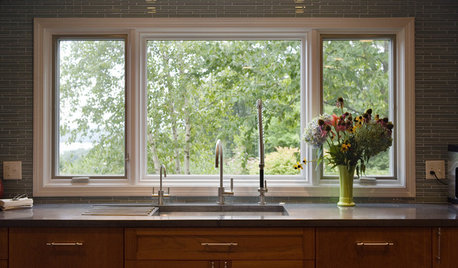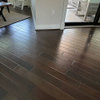Help! how to fix gaps in newly installed reclaimed flooring that
chaparral
12 years ago
Related Stories

BEFORE AND AFTERSOld Hollywood Style for a Newly Redone Los Angeles Bath
An ‘NCIS’ actor gives her 1920s classic bungalow’s bathroom a glam retro makeover
Full Story
BATHROOM DESIGNKey Measurements to Help You Design a Powder Room
Clearances, codes and coordination are critical in small spaces such as a powder room. Here’s what you should know
Full Story
REMODELING GUIDESContractor Tips: How to Install Tile
Before you pick up a single tile, pull from these tips for expert results
Full Story
KITCHEN BACKSPLASHESHow to Install a Tile Backsplash
If you've got a steady hand, a few easy-to-find supplies and patience, you can install a tile backsplash in a kitchen or bathroom
Full Story
DOORS5 Questions to Ask Before Installing a Barn Door
Find out whether that barn door you love is the right solution for your space
Full Story
WINDOWSContractor Tips: How to Choose and Install Windows
5 factors to consider when picking and placing windows throughout your home
Full Story
HOUSEKEEPINGWhat's That Sound? 9 Home Noises and How to Fix Them
Bumps and thumps might be driving you crazy, but they also might mean big trouble. We give you the lowdown and which pro to call for help
Full Story
STANDARD MEASUREMENTSThe Right Dimensions for Your Porch
Depth, width, proportion and detailing all contribute to the comfort and functionality of this transitional space
Full Story
SELLING YOUR HOUSEHelp for Selling Your Home Faster — and Maybe for More
Prep your home properly before you put it on the market. Learn what tasks are worth the money and the best pros for the jobs
Full Story
BEFORE AND AFTERSKitchen Rehab: Don’t Nix It, Fix It
A small makeover makes a big impact in a traditional kitchen in Atlanta with great bones
Full Story






User
chaparralOriginal Author
Related Professionals
Beaumont Flooring Contractors · East Hemet Flooring Contractors · Mount Vernon Flooring Contractors · Palm Harbor Flooring Contractors · Suwanee Flooring Contractors · West Linn Flooring Contractors · Edwards Tile and Stone Contractors · Three Lakes General Contractors · Browns Mills General Contractors · Enumclaw General Contractors · Ewing General Contractors · Merritt Island General Contractors · North New Hyde Park General Contractors · Pine Hills General Contractors · Richfield General Contractorsidrive65
chaparralOriginal Author
User
idrive65
chaparralOriginal Author
greiter
chaparralOriginal Author
User
gbsim1
chaparralOriginal Author
floorguy
Ilene Perl
chaparralOriginal Author
padmae